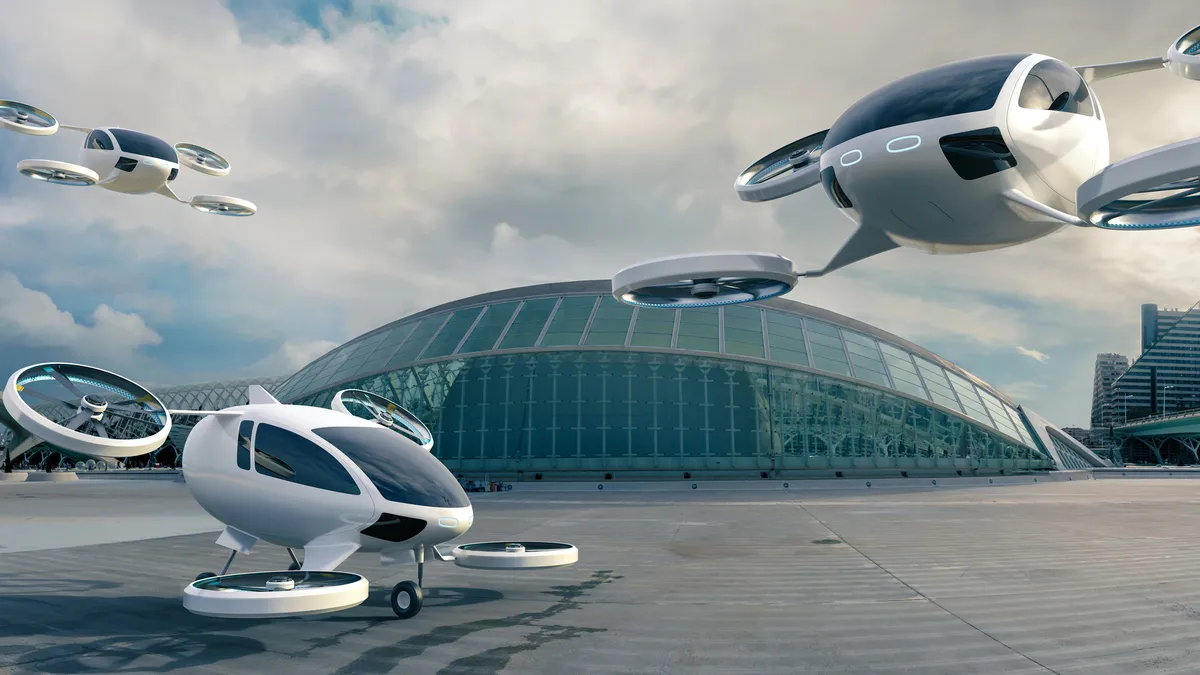Dive Brief:
- Air taxis are moving closer to reality, but federal, state and local governments have not yet developed or implemented policies for the larger electric vertical takeoff and landing aircraft system, says a Mineta Transportation Institute report published in May.
- Vertiports for eVTOL operations should be a part of transit-oriented development plans and policies, the report states, and development codes and zoning ordinances should add a new land-use category for them.
- Vertiport development should prioritize key public venues such as transit centers and hospitals and provide access to safe pedestrian and bicycle routes and other micromobility and microtransit options, the study says. Geographic information system tools, which analyze and interpret geographic data, can help with site selection and community engagement and education.
Dive Insight:
New York City and Chicago are already poised to see commercial eVTOL service begin by 2025, with commitments from United Airlines and Archer Aviation to connect those downtowns with major airports. But “very few short- or long-range plans show awareness of, or policies to govern, safe, accessible, and equitable vertiport development,” the Mineta report says.
Using the San Francisco Bay area as a model, the study looked at five Bay-area counties for sites suitable for vertiports. It delves into safety, access and equity issues in urban, suburban and exurban areas. In addition to identifying potential vertiport sites, the researchers examined the need for low-altitude air corridors in the area.
The report concludes that eVTOLs and associated vertiports can connect areas currently plagued by traffic congestion in a more sustainable manner than surface transportation. The eVTOL aircraft can also provide “new opportunities for public and private partnership to boost business, emergency, and tourism services, and to economically benefit local communities,” the study says. “However, failure to plan for [air taxis] may lead to inadequate vertiport mitigation or worsen the incompatibilities which led to a history of inaccessible and inequitable airport development,” the report says.












